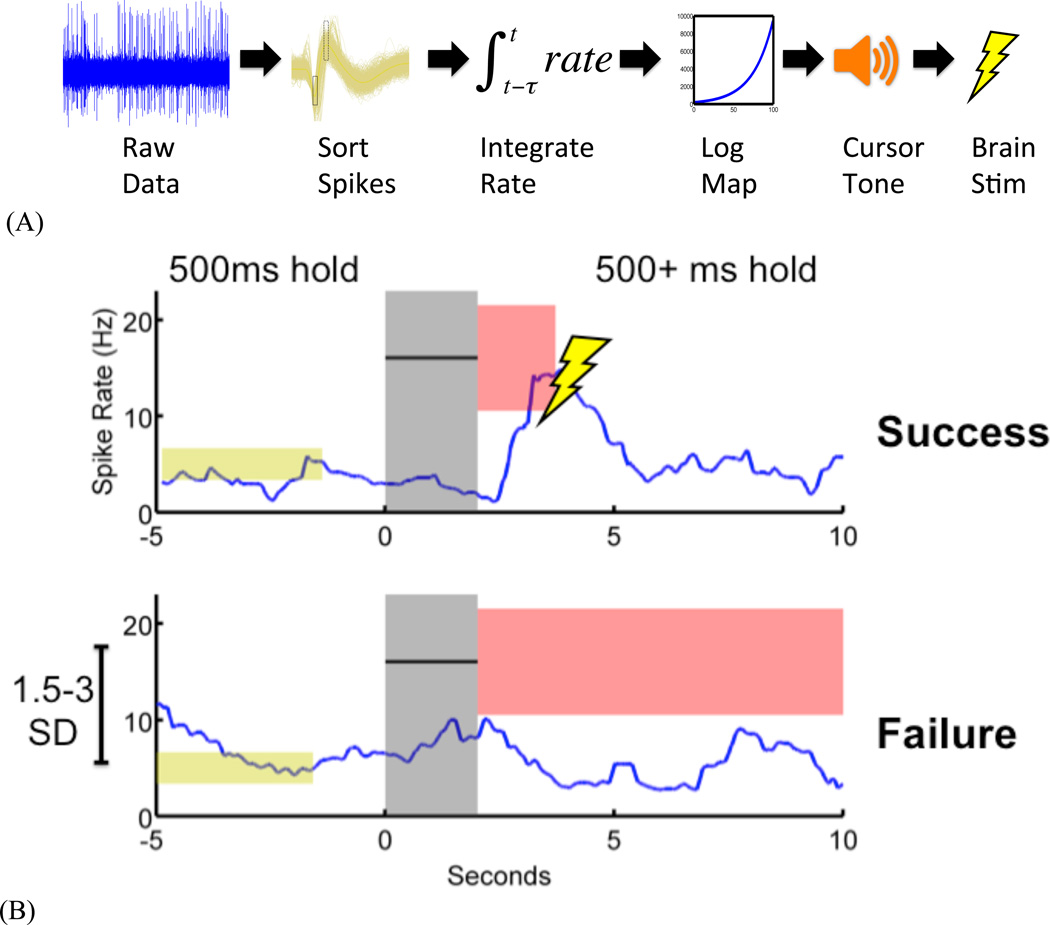Figure 1. Methods.
(A) BCI transform from brain activity to control an auditory cursor. Real-time sorted spikes from an isolated unit are transformed to an instantaneous rate, which is then linearly scaled into the 0–100 range. Cursor values from 0 to 100 are mapped onto a logarithmic frequency ladder from 200 to 10,000 Hz and continuously presented to the animal during trials.
(B) BCI trials for brain stimulation reward. The animal is required to maintain the controlled unit’s firing rate at a pre-established baseline for at least 500 ms. A cue tone then indicates a target that is at least 1.5 standard deviations (SD) from baseline. The auditory cursor must be controlled (by increasing firing rate) to remain within the target. Maintaining rate in target for at least 500 ms leads to trial “Success” and subsequent brain stimulation; failure to do during the trial duration (here, 10 seconds) leads to “Failure” and no stimulation. Trials are followed by a 5–10 second random duration timeout period.

